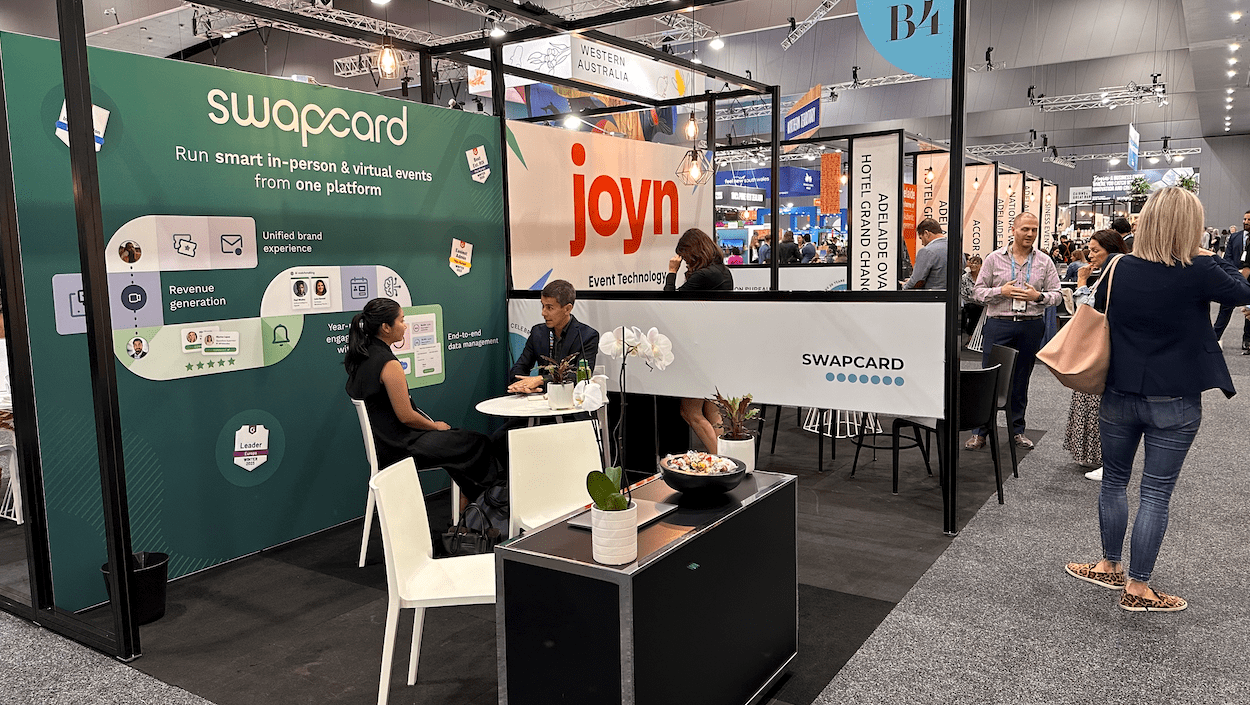Ask any seasoned presenter and she’ll admit a simple truth. People don’t remember many details from a keynote, if at all.
They don’t walk around memorizing the ins and outs of technical demos. They barely keep in mind a figure or two a speaker mentioned, usually right and at the start or the end of a presentation. They might feel they gained some tips that open the door to new skills. All this is valuable. But it’s not the most powerful way to make sure an audience will take away a lasting memory from a conference or a trade show.
What’s the key ingredient then? The way these get-togethers make people feel.
Call it the vibe or the atmosphere, when attendees look back on events they reconnect with the emotional experience. Guests will carry with them the fact they were inspired, bored, excited, or bored. Or all of the above, sometimes.
Researchers found the effect is even more significant if the experience involved some sort of change and growth.
“The way we remember something influences our ability to recall it. If we remember something rich with sensory detail—what an item smells, tastes, looks, sounds, and feels like—we retain it much more vividly than if we just go for the broad strokes.” Nick Morgan, skills coach and author, No More Boring Meetings
Mission: Emotional
So what does this mean for event organizers? An important part of your role is to design experiences that align with your stakeholders’ and attendees’ emotional worlds.
In a nightmare scenario the event team of a trade fair about regional artisanal food, for example, find out their visitors flocked to the fast food stand just outside the main hall. Imagine a virtual reality developers’ convention where the wifi doesn’t work too well. Or an event about diversity and empowerment with an all-male panel (yes, that does still happen in this world).
When instead of wow moments you deliver ouch experiences, the damage to brand awareness and loyalty can spin out of control. Think no further than an embarrassing Instagram photo or an angry tweet by an influencer who feels you’ve wasted their time.
But let’s shift our focus to best practices that produce results. After all, we’re in the business of positive shared memories, ongoing conversations, and trust-building.
Which events design and deliver experiences that break barriers, build community, offer new networking opportunities, and even boost sales by offering a fine-tuned and consistent emotional journey through engaging environments?
The best ones. Here’s a non-complete list we collected for you to be inspired by.
[Note - not all events or organizers mentioned here are Swapcard clients. We tip our hat to anyone that delivers a unique, thoughtful, and well-designed UX.]
The Seven Emotional Wonders of the Event World or How to Create Memorable Journeys
1. Arrival and Entrance: Welcome is the New Easy
It has to be said. One thing you don’t want to do as an event planner is to promise people the future and then deliver a middle ages experience such as standing in line for three hours to get into the venue. One way to get around this problem of congestion is to use face recognition software which recognizes a person from a database of faces and responds with an immediate check-in, explains Cate Banfield of BCD Meetings & Events.
This technology does have its controversial sides when it comes to visitors’ data privacy. But when applied in a transparent and responsible way, facial recognition can rid event visitors and organizers of the pain of comparing identification documents against badges and tickets.
Does this mean a “goodbye queues, hello my friend” experience from now on?
Not necessarily. But in some cases, the UX at events does get a much-needed boost. After all, you can only make a first impression once.
Then again, this type of cutting-edge tech can be used in ever-more creative ways. For example, Hampton Hotels teamed up with AgencyEA to deploy a vending machine that used facial-recognition technology to produce “smile swag” customized for each person posing. More than 700 attendees lined up over the three-day event for a chance to win fun prizes. Now that’s how you put a smile on people’s faces.
2. Main stage: Inspire and wow
Overheard at a major conference while waiting for a keynote:
Attendee A: Wait, did these event planners really hang their auntie’s brocade curtains on the main stage?
Attendee B: What auntie?
A: Better make it grandma. Yikes!
B: They couldn’t have. It does look a little weird, though.
Don’t open the door to your audience speculating on your embarrassing cost-saving tactics. Central stage design, be it iconic, consistent, and sparse such as Ted-X worldwide, or awe-inspiring like excavated swimming pools and boxing rings that feature in The Lost Lectures around London, Berlin or NYC should get your audience going.
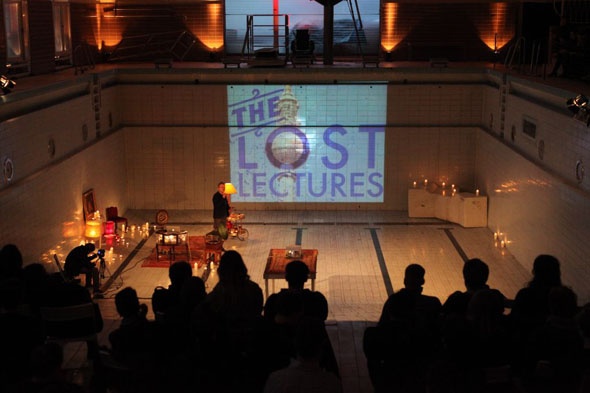
The "lost lectures" in a converted Berlin swimming pool
Let them think in silence, or gasp or giggle or go “Oh my God.” But your attendees do need to remember that moment when the keynote speaker brought it all together.

For the 2017 edition of the annual deep tech summit and challenge, the event team transformed the main hall of Paris’ Centquatre Center into a teeming jungle, full of hidden gems lurking in the thick undergrowth.
The rich metaphor wasn’t lost on startups, investors, and entrepreneurs.
3. Social spaces: Connect and recharge (people, not phones)
With all due respect to engagement platforms and digital tools such as event apps or remote streaming, they’re as good as their promotion of in-person interactions. Rubbing elbows online through smart tech matters when it brings people together in the real, offline world. That’s where social spaces come into play.
In these designated areas attendees can chat with experts, find out the latest industry news, and take a break from the official program. It’s also where the ancient human activity of gossiping takes place. No, talking behind people’s backs about who got promoted and who was booed and booted during the last board meeting isn’t cool. But it’s a tried and tested way of getting up to speed. Either way, the goal is the same: take a breath, take a pause, and connect with other people.
“Similar to the oasis or park in a city, the social spaces will create a sense of neighborhood to retain more people and emphasize aesthetics and human comfort and make networking pleasurable. (the result is) better marketing qualities.” Planning and Designing Social Spaces Within Trade Shows and Exhibitions, Mei Wu, University of Manitoba
So how do these places look and feel?
Fun and energizing would be one answer.
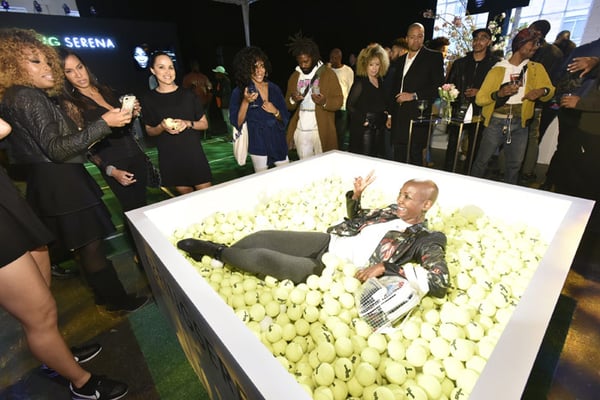
A unique way of facilitating human contact minus the hassle of noise is by creating a silent space. Silent breakout sessions, cafeterias, and even discos all feature in various events.
Nothing is quite liberating as watching visitors who don glowing earphones and hop around in the hushed rapture. Even better, you can join in on the muted partying, a pleasure Netflix offered to visitors at one of its launches (see below).
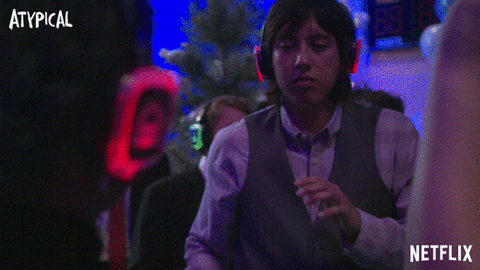 A silent party hosted by Netflix
A silent party hosted by Netflix4. Breakout spaces: Personal, communal, and focused
There are plenty of ways to define what a breakout session might be. Generally speaking, you could say it is a group discussion or activity that revolves around a specific aspect or focuses on one subtopic of the conference’s main theme.
Thus, it is likely to be held in a smaller room or separate space and should feel less anonymous for attendees than a keynote at the main stage with another 5,000 members of the audience. Being told from the stage that “you are all amazing and unique heroes” doesn’t feel so amazing, unique, or heroic.
Spending time in a smaller group at a breakout session could be the answer.
A sense of familiarity with like-minded peers could be the outcome. With it, comes a feeling that your time as an attendee was well-spent on a personal topic you share with other professionals (who are, a bit like you, amazing and unique.)
One example of how you can go the extra mile with the concept of a mini-tribe is to create a quiet session. By that, again, we don’t mean “everybody shuts up for two hours” (although let’s admit the zen effect of zero b2b noise can be healing at times.)
Here, also, a silent room experience can make a difference. That can be created by allocating participants' headphones with a pre-assigned channel for each session. Attendees use a microphone to ask questions, meaning that organizers can transform a noisy expo center into a humming collection of mini-communities, as was recently done at a medical conference in Budapest, Hungary.
5. The Bar: Nourish
The push for healthier food and beverages at events seems to escalate from a trend to a tidal wave. Delegates and speakers won’t settle for less than high-quality organic kale when they’re away from home.
So really, why shouldn’t they? After all, participants and visitors alike spend much time - and in many cases, money - on attending your event. They need to feel more than sated or imbibed. Your job is to account for your crowd's needs, from quinoa and flaxseed to big, fatty burgers.
But, wait. Food can be fun. For eventgoers, visiting a convention center for the first time can open a whole new world of local tastes and scents. Are you an event organizer based in India? Don’t shun the chappati. Relish your region or country’s culinary tradition by choosing local providers that can offer a tasteful gastronomic adventure. Your attendees will thank you for that.
Moreover, drinking - and again, this is not at all about dousing people with alcohol - and eating, are two essential activities for networking.
Networking experts have conducted research that shows the immense importance of the bar and buffet’s location. The behavioral investigator Vanessa van Edwards, for example, uses her research to trace attendee behavior and point out strategic networking hacks.
At all events, she says, there are three zones: the start zone where you check in your coat or bag and enter the venue, the side zone, not far from the bathrooms, and the social zone. And that’s where the food and beverages magic comes into play.
“Super networkers use a secret sweet spot. They typically stand at the social zone, right where people exited the bar. This is the best place to catch people, right as they are desperately looking for someone to chat with. Bingo! You just became their networking savior.” Vanessa Van Edwards, How to Hack a Networking Event
6. Demos: Buzz
How do you get people involved? Let them rule their destiny. One great and simple way to do that is for attendees to use their senses as they manipulate real objects. We all know that, says you. And right you are: demos are as ancient as snake oil and cough medicine.
Indeed, active participation is an age-old key to remembering the critical features of a product or a speech. In turn, recognition and awareness are crucial preconditions for persuasion.
What changed? The pace and scope of things. Have you seen these incredible swarms of drones that Intel launches left, right and center? You probably have. Because any sane person that witnessed the flying robots in action took a picture and posted it on social media.
Call it FOMO or the need to show off. Either way, you’d better have the dancing robots perform their routine for your team and not your competitors.
So, you’re not the world’s biggest event organizer or the show’s most prominent exhibitor? Do not despair.
Amazing things can be done on a shoestring. You are a creative, kickass trailblazer. You’ll figure it out.
Alternatively, you can take a look at these 72 sources of demo inspiration and collect all the details you need using some simple and free tools.
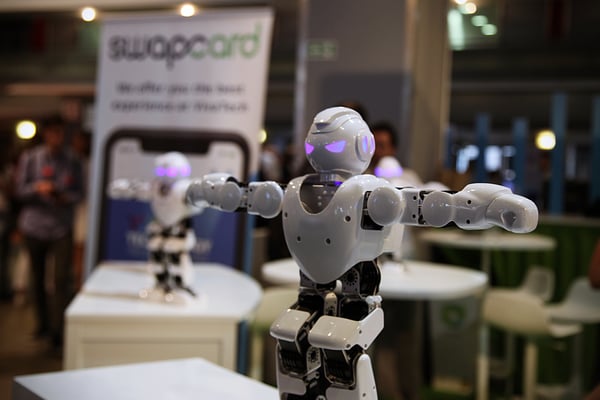
7. VR, AR, and all sorts of alternative reality spaces: Immerse
Our last emotional experience, but not the least, is the immersive experience of virtual and augmented realities.
1,867 attendees set a new Guinness World Record for the most people using virtual reality displays at the same time during a presentation at the 2017 YPO EDGE in Vancouver.
Still, big isn’t always beautiful. Plus it can be costly. Movement, however, is a different story altogether.
“The idea that sitting or standing still while playing VR games or experiences is getting a bit [whisper it] dull – especially for those trying to build experiences outside the home... It can also be a bit lonely”. Neil Bennet, Digital Arts
So now all the rage at events is getting groups of people to jump down the rabbit hole of VR. Or better call it LBVR, or Location-Based Virtual Reality.
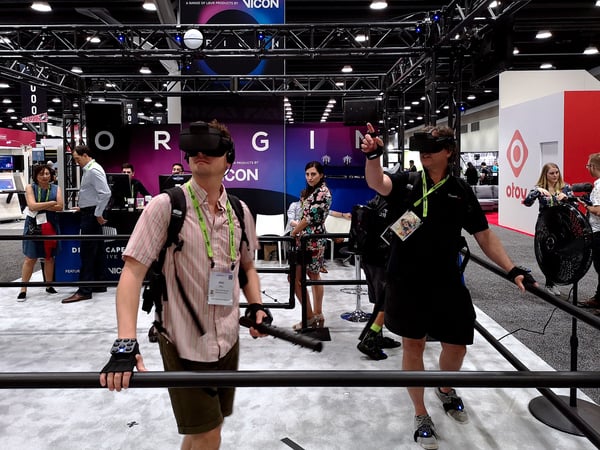
We’ll see how that pans out as Swapcard partners with Laval Virtual to deliver an event app and engagement platform for the trade show's 2019 edition.
For the time being, in case of confusion, remember what one famous Cheshire cat said about taking the road less traveled.
“I'm not crazy, my reality is just different than yours”. Alice in Wonderland, Lewis Caroll
Conclusion
While it might cost you time and effort (and some money), don’t be afraid to take your attendees on an emotional journey that is consistent with your event brand. They’ll appreciate the effort. More importantly, visitors, participants, and speakers will also carry a powerful memory of the experiences. Last but not least, they will repay you with brand recognition and loyalty - and that, after all, is key to marketing success.



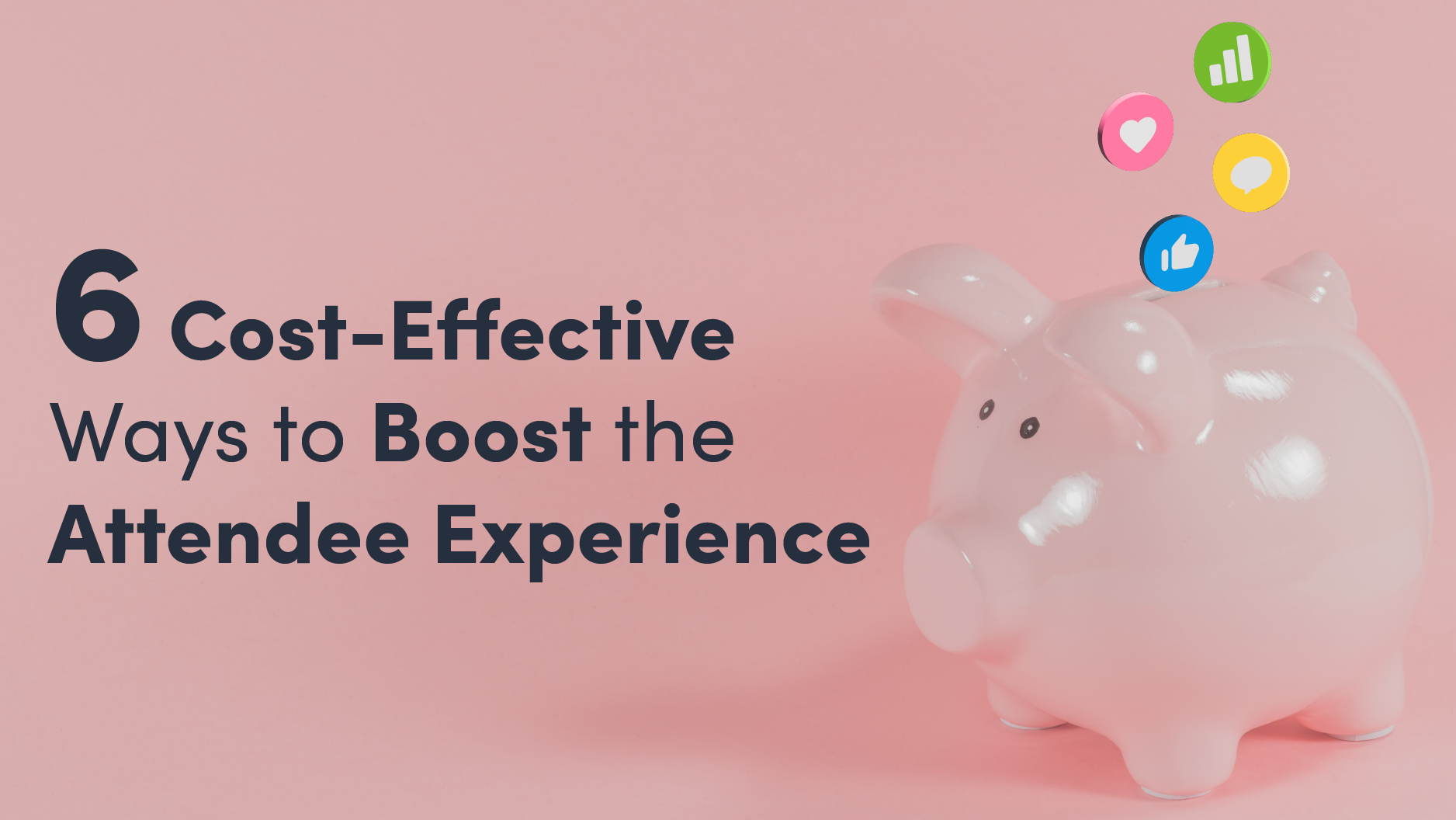
.png)
